One World Trade Centre observatory in New York opens to public with stunning views and agonising memories of 9/11
Building came up close to where the twin towers were destroyed
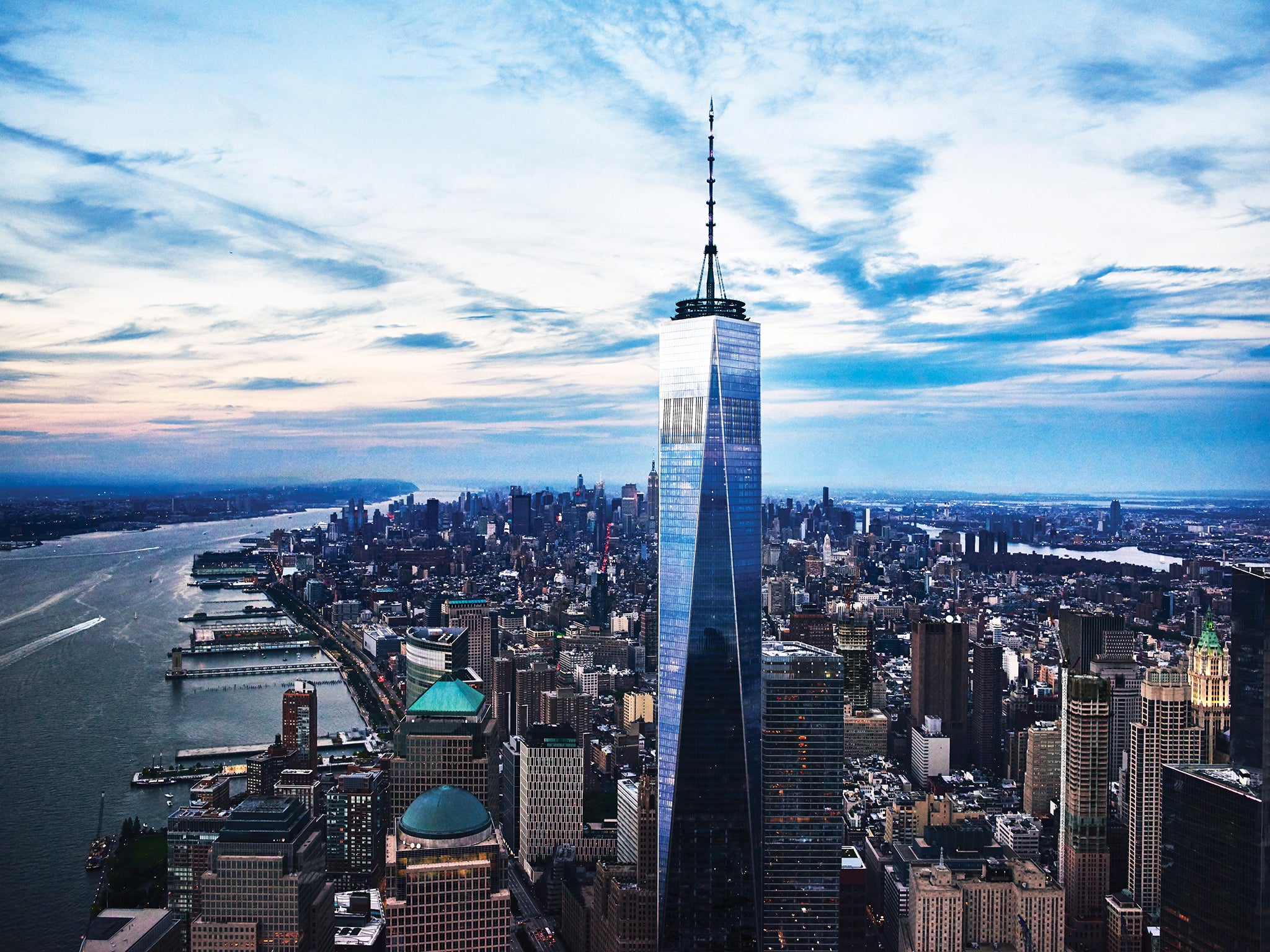
Your support helps us to tell the story
This election is still a dead heat, according to most polls. In a fight with such wafer-thin margins, we need reporters on the ground talking to the people Trump and Harris are courting. Your support allows us to keep sending journalists to the story.
The Independent is trusted by 27 million Americans from across the entire political spectrum every month. Unlike many other quality news outlets, we choose not to lock you out of our reporting and analysis with paywalls. But quality journalism must still be paid for.
Help us keep bring these critical stories to light. Your support makes all the difference.
One could, if one wished, choose not to breathe as the elevator soars to the 101st floor of New York’s One World Trade Centre.
Forty-seven seconds is all it takes to race 1,250 feet into the sky, forty-seven seconds to ascend to the most rare of vantage points and a view that most definitely has the ability to take away one’s breath.
Thirteen-and-and-a-half years after al-Qaeda militants hijacked four passenger planes and flew two of them into the twin towers of the World Trade Centre, the public has been granted access to the observation deck of the building built in their place.
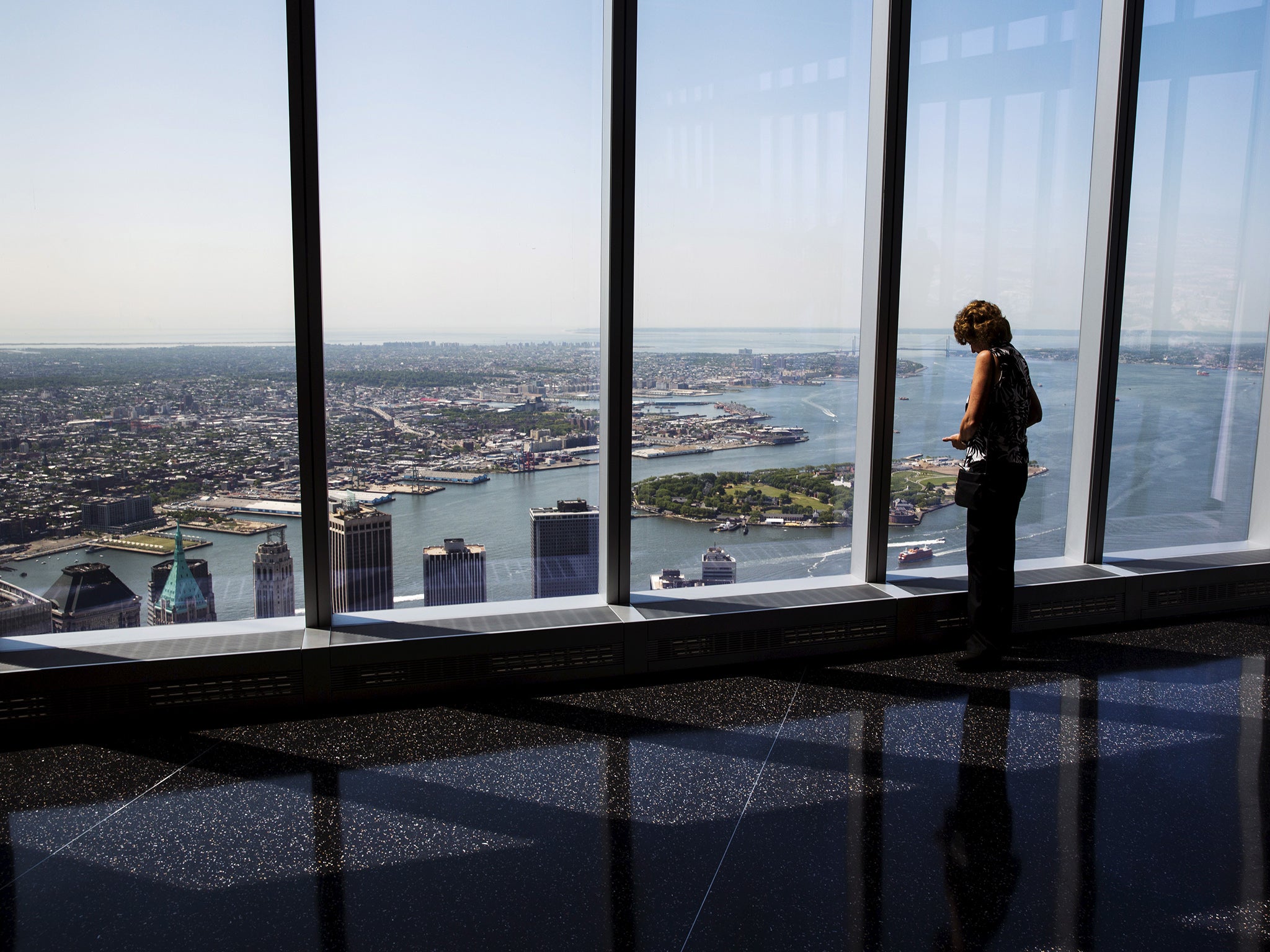
That new structure, One World Trade Centre, the tallest building in the Western Hemisphere, is at one moment visually stunning, a remarkable symbol of resilience and defiance, and wholly inadequate.
Thousands wound their way around the base of the building on Friday as crowds lined up to visit the observatory, following a ceremony that involved the cutting of a ribbon. Officials estimate the building will receive between three and four million visitors a year, with adults each paying $32 a time.
“It’s our last day in New York. We booked the tickets online in advance,” explained Lisa Kallmes, a history teacher from Phoenix, Arizona, waiting with her husband and three children.
Her husband, Chris, added: “We were both at college when 9/11 happened. Everybody was watching the Weather Channel when it said that all airlines had cancelled their flights because of a national emergency. We couldn't understand what sort of weather emergency would require the cancelling of all flights.”
Four assorted members of the Solomon family had just completed their visit. They were energised and moved by what they had experienced.
They had gazed out on the seemingly endless horizon, buoyed by a feeling of optimism, and they had looked down too at the dark marble pools, established at the very footprint where the 1 World Trade Centre and 2 World Trade Centre had stood.
“You’re standing there, and it’s surreal to be looking at where all that terribleness took place,” said Jeff Solomon. “But there’s also a lot about rebirth. After you come down, you walk out and you feel invigorated.”
Sue Solomon, who lives in Los Angeles, said: “I think it is a beautiful tribute the ability and the spirit of the American people.”
At the bottom of the building are images and audio recordings of many of those who worked to build and construct it, steelworkers, labourers and designers. Nearby is a geology-dedicated exhibit about the very bedrock in which One World Trade Centre sits. And then there are the lifts.
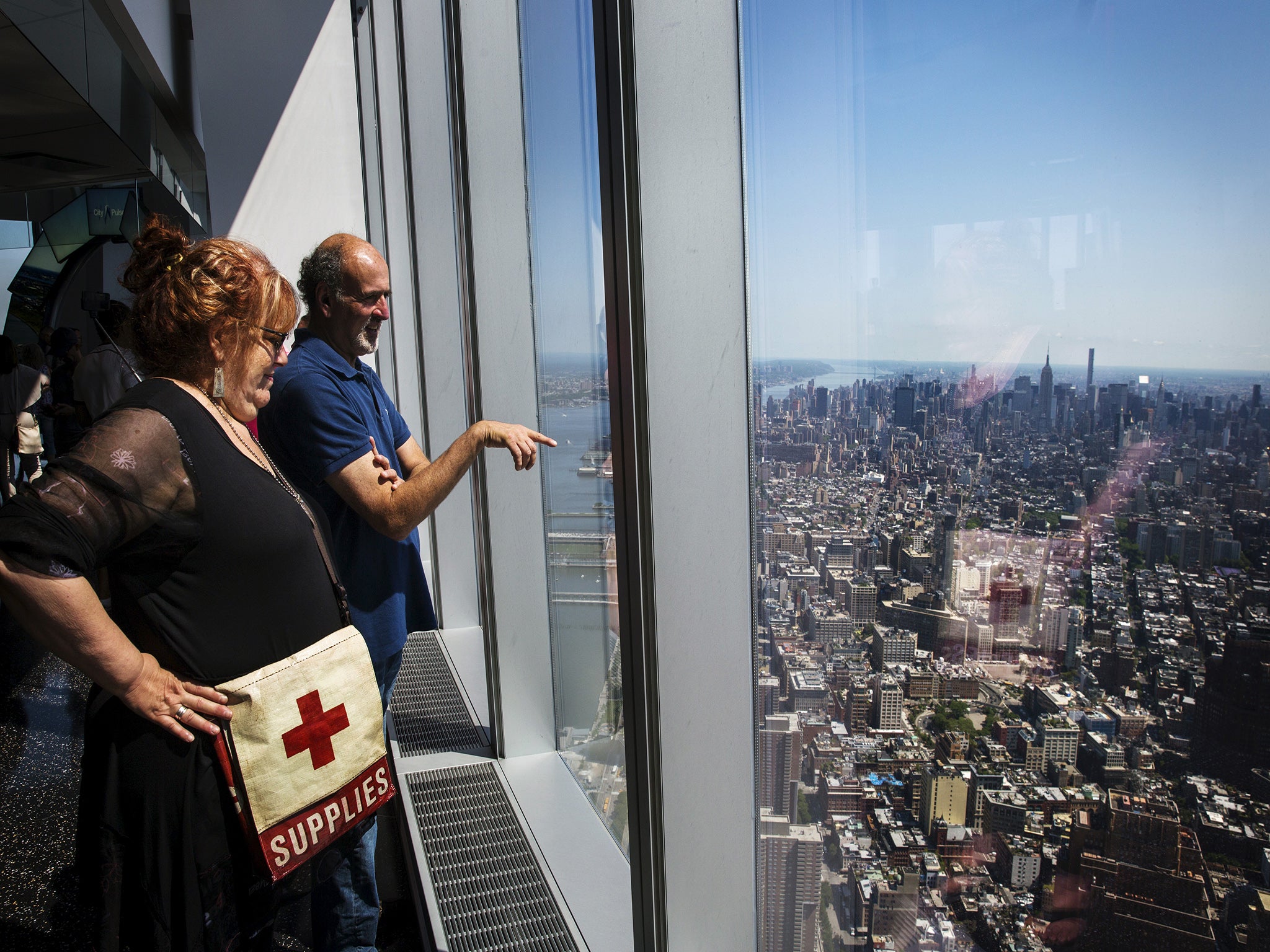
There are five elevators, all located inside the building and said to be some of the fastest in world. And as they ascend, their walls display a computer time-lapse simulation of the view of New York from the days of the first European settlement in around 1500, right to the present day.
On this rapidly ascending timeline, the twin towers feature for less than two seconds.
There are three food outlets on the 101st floor, a bar, a place to buy sandwiches and a sit-down restaurant.
And people looking for peace from their phones will be glad that it is too high for a signal. (An employee said a new tower was being added to the building itself to enable people to use their devices.)
But it the view that people will come for. On Friday afternoon, as the sun shone and the air appeared to sparkle, The Independent could gaze north up Manhattan, past the Empire State Building, (whose crown this new building stole), through Harlem, the Bronx and far, far beyond.
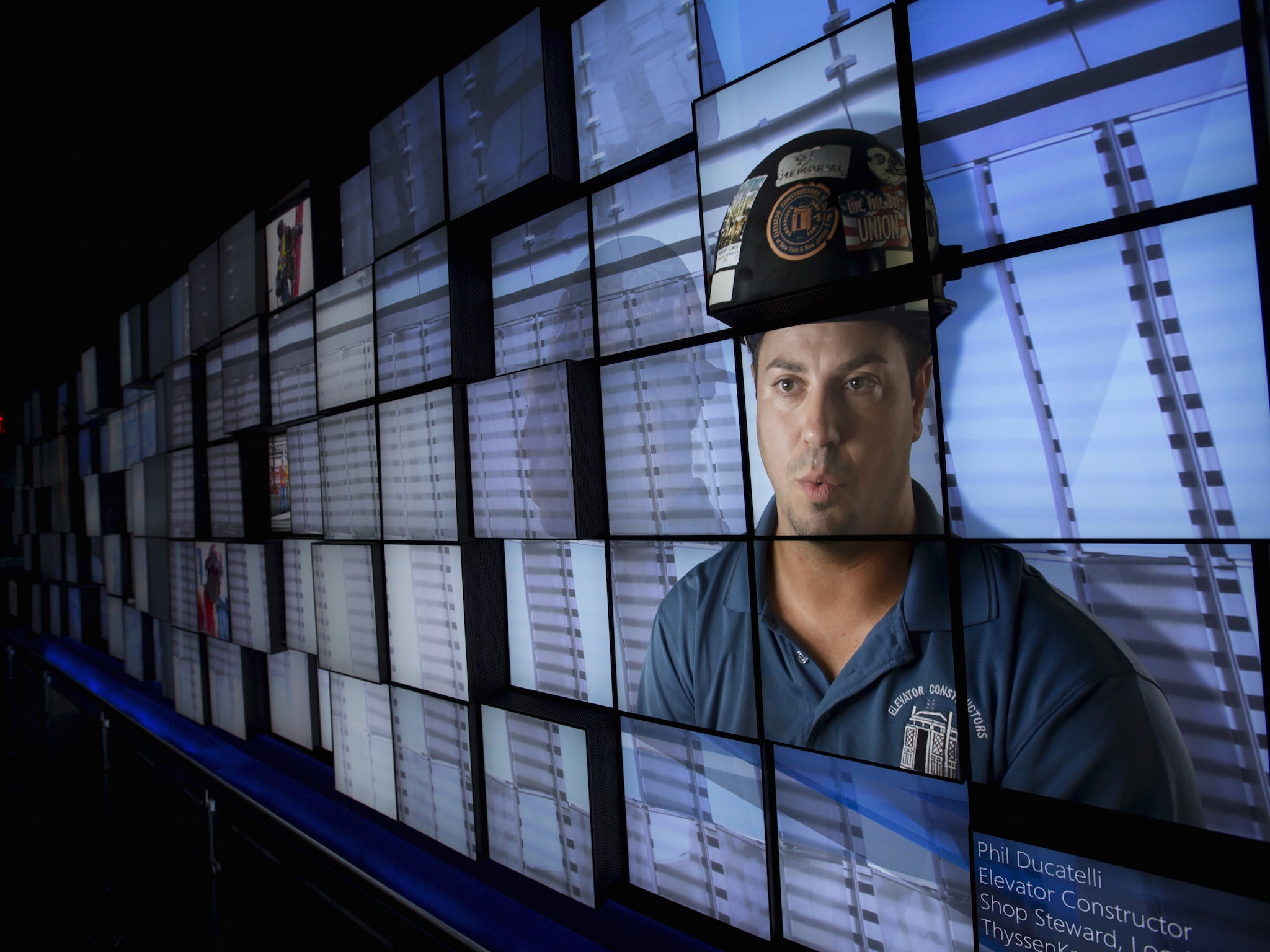
To the left lay the Hudson River. On the other side were the bridges crossing the East River, the Brooklyn Bridge, the Manhattan Bridge and the Williamsburg Bridge. The sometimes dirty and frequently chaotic city appeared pristine.
Somebody said it was possible to see for 50 miles on such a day. An official told reporters last week one could even detect the curvature of the earth, such was the elevation. Who knows for sure, but the the view was certainly remarkable. The observatory’s motto is “See Forever”.
Even before construction began on One World Trade Centre, it was always apparent the building, as with the twin pools, and memorial centre, would be something of a forced compromise.
Some had wanted the place where almost 3,000 people perished to be left open. If it was possible to create an adequate memorial to those who died, then a park park or memorial garden would be most appropriate, they said.
Yet there was also pressure from the business community, which not only wanted to wanted to make use of the prime location, but also to rebuild the towers as an unmistakable sign of resistance and regeneration.
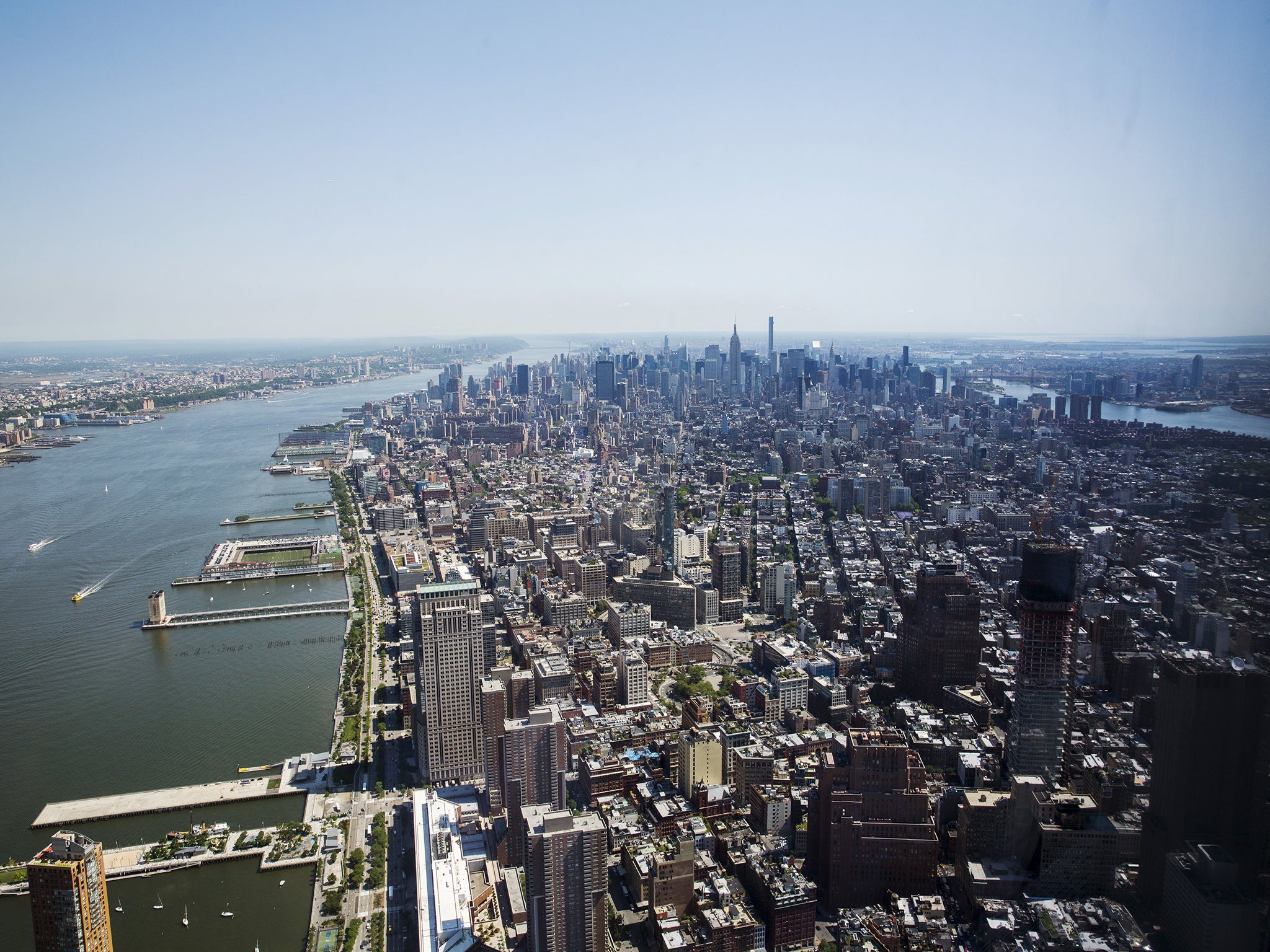
In the end, the building came up, alongside the two reflecting pools and the memorial park. Now, nearly 14 years later – a period of time that appears to have sped past as quickly as the elevators – most visitors appear to feel that those behind the project got it about right.
Sitting outside on a wall, waiting their turn to enter, were an elderly couple from Newburgh in upstate New York.
Like so many others, Bob Maschitelli and Vita Lercari, said the images from September 11 2001 of the planes flying into the towers and bursting into flames had become embedded in their minds.
“I remember watching on television and people were not saying a word. Even now it makes me cry,” Ms Lercari said, with a gulp.
“I remember we went home that night and lit candles. All those lives...”
Subscribe to Independent Premium to bookmark this article
Want to bookmark your favourite articles and stories to read or reference later? Start your Independent Premium subscription today.
Join our commenting forum
Join thought-provoking conversations, follow other Independent readers and see their replies
Comments